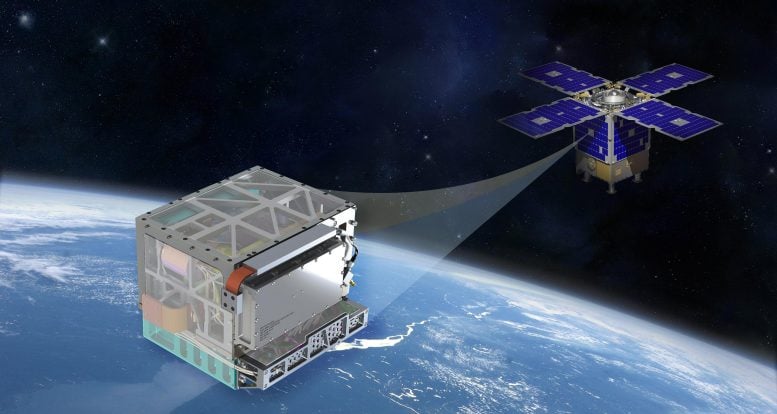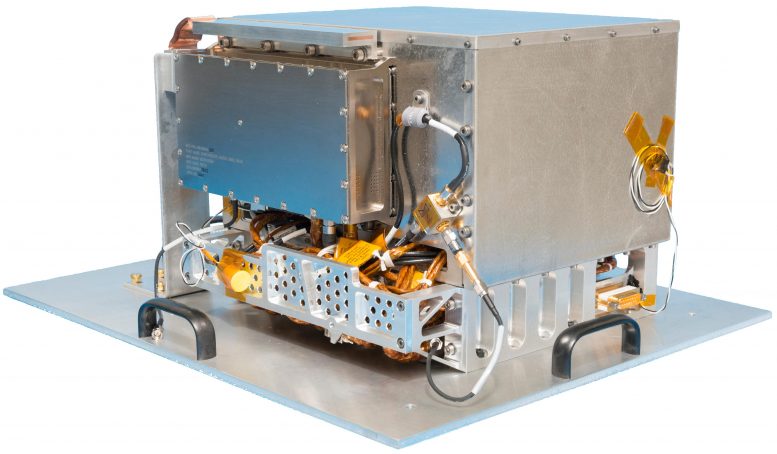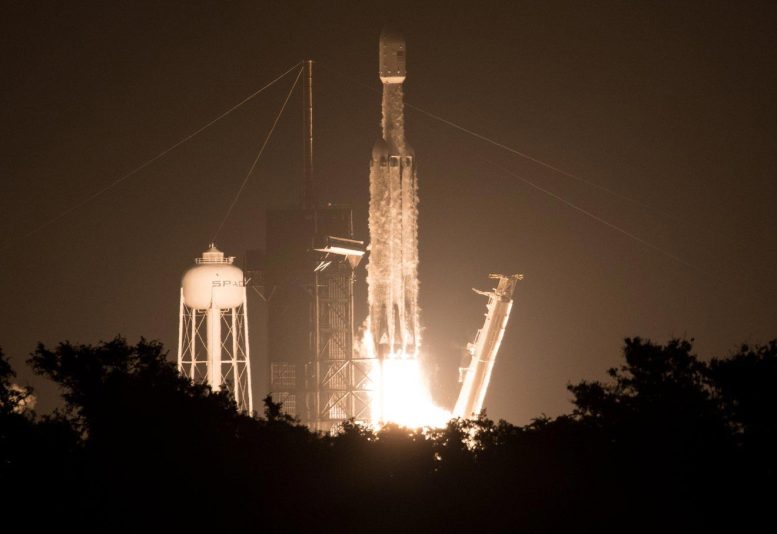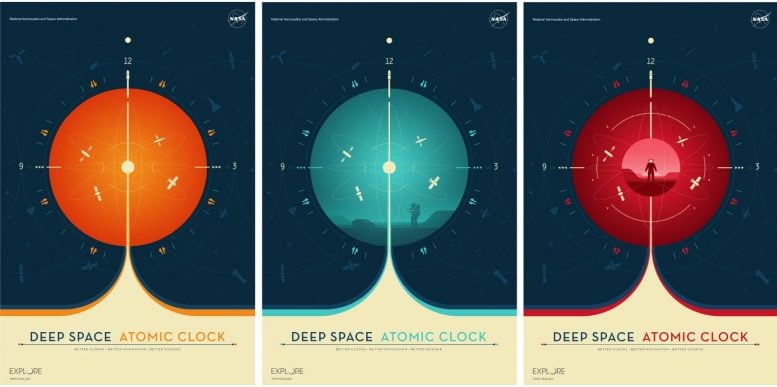
This illustration shows NASA’s Deep Space Atomic Clock technology demonstration and the General Atomics Orbital Test Bed spacecraft that hosts it. Spacecraft could one day depend on such instruments to navigate deep space. Credit: NASA
Geared toward improving spacecraft navigation, the technology demonstration operated far longer than planned and broke the stability record for atomic clocks in space.
For more than two years,

The Deep Space Atomic Clock is about 10 inches (25 centimeters) on each side, roughly the size of a toaster. Its compact design was a key requirement, and an even smaller iteration will fly aboard NASA’s VERITAS spacecraft. Credit: NASA/JPL-Caltech
Currently, spacecraft rely on ground-based atomic clocks. To measure a spacecraft’s trajectory as it travels beyond the Moon, navigators use these timekeepers to precisely track when those signals are sent and received. Because navigators know that radio signals travel at the speed of light (about 186,000 miles per second, or 300,000 kilometers per second), they can use these time measurements to calculate the spacecraft’s exact distance, speed, and direction of travel.
But the farther a spacecraft is from Earth, the longer it takes to send and receive signals – from several minutes to a few hours – significantly delaying these calculations. With an onboard atomic clock paired with a navigation system, the spacecraft could immediately calculate where it is and where it is going.

The Deep Space Atomic Clock was launched on a SpaceX Falcon Heavy rocket as part of the Department of Defense’s Space Test Program-2 (STP-2) mission from Launch Complex 39A at NASA’s Kennedy Space Center in Florida on Tuesday, June 25, 2019. Credit: NASA/Joel Kowsky
Built by NASA’s Jet Propulsion Laboratory in Southern California, the Deep Space Atomic Clock is an ultra-precise, mercury-ion atomic clock encased in a small box that measures about 10 inches (25 centimeters) on each side – roughly the size of a toaster. Designed to survive the rigors of launch and the cold, high-radiation environment of space without its timekeeping performance degrading, the Deep Space Atomic Clock was a technology demonstration intended to carry out technological firsts and fill critical knowledge gaps.
Watch this video explainer to learn why accurate timekeeping in space is essential and how NASA’s Deep Space Atomic Clock will make future spacecraft less dependent on Earth to navigate autonomously. Credit: NASA/
Three eye-catching posters featuring the Deep Space Atomic Clock and how future versions of the tech demo may be used by spacecraft and astronauts are available for download here. Credit: NASA/JPL-Caltech